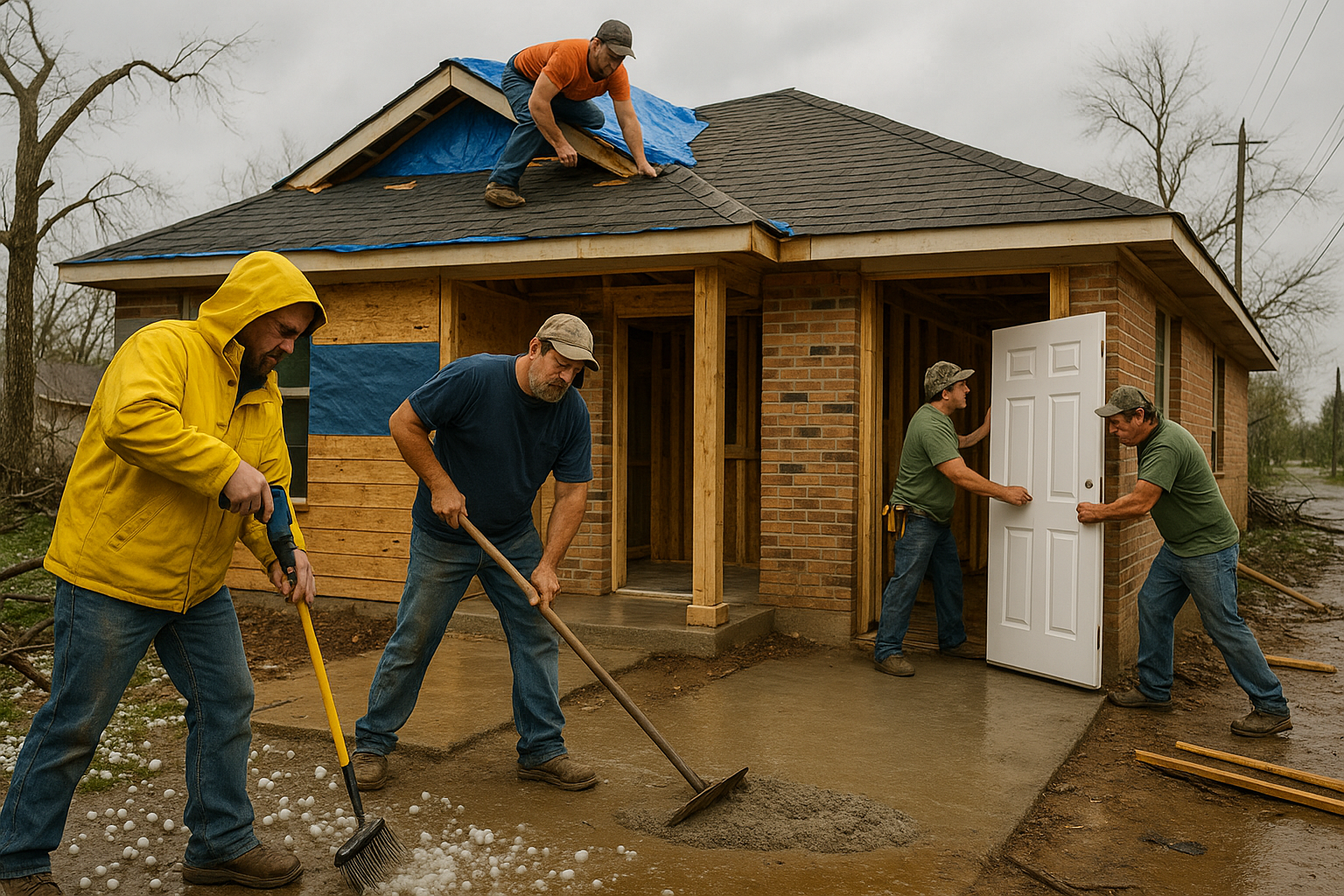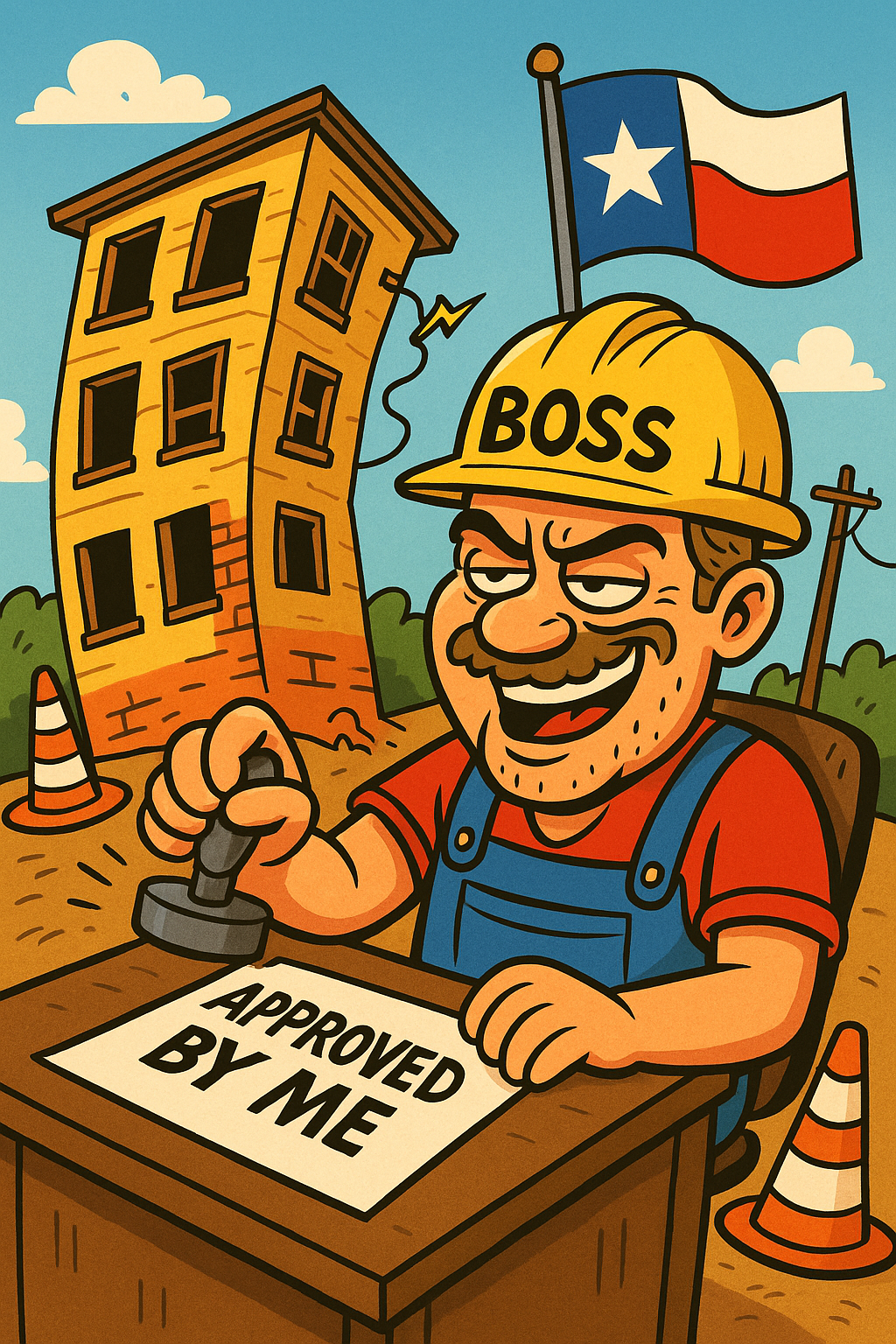Archive for July, 2025

If you’re a Texas homeowner staring down a construction defect in your brand-new house, you may assume you’ll have your day in court. But odds are, you won’t. That contract you signed? It almost certainly forces you into private, binding arbitration—a dispute resolution process designed by the very people you’ll be going up against.
Arbitration in residential construction isn’t courtroom litigation. It’s not presided over by a judge or a jury of your peers. It’s a streamlined system with relaxed evidentiary rules, limited discovery, and—in many cases—a decision-maker who regularly hears cases for the same national homebuilders again and again. The process favors speed and cost containment. But more often than not, those savings are for the builder, not the homeowner.
So is it hopeless? Not if you know what you’re doing. And that starts with understanding what arbitration is—and isn’t.
Residential construction arbitration in Texas typically begins with a required written demand under Chapter 27 of the Texas Property Code—known as the Residential Construction Liability Act. This isn’t just a bureaucratic formality. It’s a ticking clock with strict requirements. You must outline the defects in writing, allow the builder time to inspect and respond, and give them the opportunity to offer a repair before you can proceed. Make no mistake: failing to follow the RCLA process to the letter can torpedo your claim. It can cap your damages, limit your attorney’s fees, and undermine your credibility in arbitration. Builders know this. Their lawyers count on it.
Once arbitration begins, the homebuilder’s legal team will often try to paint the defects as cosmetic, the performance failures as acceptable, or the warranties as expired. And because arbitrators don’t have to follow the same rules of evidence as a court, decisions often rest not on statutory violations or code breaches—but on what the arbitrator finds “reasonable.”
I’ve served as an expert witness in hundreds of construction defect cases. I’ve reviewed installations that violated building code, manufacturer instructions, ASTM standards, and basic common sense. And I’ve seen homeowners prevail—even in arbitration. Winning isn’t about emotion. It’s not about volume. It’s about evidence. Arbitrators need clear, digestible information—technical defects explained in plain English and backed by standards, drawings, and photos.
This is where the right expert can shift the balance. An effective expert witness doesn’t just testify. He teaches. He connects the dots between the poorly installed roof flashing, the water-stained drywall, and the language of IRC R703.4 or ASTM E2112. He doesn’t hedge when asked about compliance—because the code is not a suggestion. Arbitrators, even the seasoned ones, often don’t know the nuances of window buck detailing, self-adhered flashing compatibility, or slab edge insulation vapor drive. That’s not a criticism—it’s a reality. So the job of the expert is to make those concepts stick and show how the builder’s shortcuts created real damage—not hypothetical risk.
One of the unspoken advantages builders enjoy in arbitration is surprise. They rely on homeowners being unfamiliar with the process, the procedural traps, and the consequences of rejecting repair offers that seem generous but solve nothing. But when a homeowner comes prepared—with a code-savvy expert, a complete photographic and narrative record, and documentation that aligns RCLA demands with the real-world failures observed—the builder’s strategy begins to crack. Arbitrators notice when a builder fails to defend obviously defective work. They notice when the homeowner’s expert can explain flashing integration better than the installer who botched it. And they definitely notice when a builder’s repeated denials start to look less like disagreement and more like avoidance.
Texas doesn’t offer homeowners many favors in construction disputes. But what you lack in leverage, you can make up for in preparation. Hire your own inspector early. Document everything. Insist on written communication. And get help from someone who’s been through arbitration from the expert witness seat. Builders win when homeowners give up. But when you put pressure on the weak points—poor workmanship, ignored codes, vague warranties, empty promises—results can turn.
No, arbitration isn’t ideal. It’s not fair. But it’s not unbeatable. And with the right team, the right preparation, and a well-developed expert narrative, you can hold the builder accountable. I’ve seen it happen. I’ve helped make it happen. And I’ll keep doing it.

It always starts the same way. A family is blindsided by disaster—a pipe bursts while they’re at work, a hailstorm punches through a skylight, floodwater creeps in under the front door during a spring downpour. Within hours, the ceiling is sagging, baseboards are soaked, and the drywall feels like a damp sponge. The house smells like wet carpet and panic.
That’s when the remediation company shows up. They respond fast—quicker than most insurance adjusters, often quicker than the homeowner knows what to ask. They’re polite, professional-looking, and armed with moisture meters and clipboards. “We’ll get this cleaned up in no time,” they say. “We’re a full-service firm. We can do the dry-out and take care of the remodel too.”
That’s the moment everything quietly goes off the rails. These contractors—called in after wind, hail, flood, or water leak events—routinely insinuate themselves into the role of remodelers. They were brought in to extract water, tear out damaged materials, and maybe run a few dehumidifiers. But by the end of that first visit, they’ve secured a signature on a vague work authorization and are suddenly acting as a full-blown general contractor. They start talking about flooring choices and cabinets, but nobody ever mentions permits, code compliance, or who’s actually supervising the job. And from there, the damage starts all over again—only this time it’s man-made.
I was asked to inspect one of these homes. It was a modest two-story in a 10-year-old subdivision, flood-damaged after a spring storm had backed up runoff into the ground-level living room. The remediation company arrived the next morning and started tearing out carpet, baseboards, and lower drywall. All well and good—until they started rebuilding. They replaced the drywall before the framing was dry. They installed vinyl plank flooring over a still-damp slab with no vapor barrier. They reconnected a gas-fired water heater without checking the draft or combustion air. They even “repaired” electrical wiring that had been submerged—no permit, no inspection. On the surface, it looked finished. But behind the paint, it was a lawsuit waiting to happen.
These flood contractors operate in a gray zone. Most have no formal licensing in general contracting, plumbing, HVAC, or electrical. In Texas, that’s perfectly legal—state law does not require a general contractor license. Many of these companies bank on that loophole. They advertise “turnkey disaster recovery,” but what they’re really offering is unlicensed remodeling disguised as restoration. In nearly every one of these projects, I find no permits, unqualified labor touching mechanical systems, wet materials sealed up and hidden, missing fireblocking, improperly terminated wiring, and no documentation showing the structure was ever dry. But the invoices are inflated, the work looks “done,” and the homeowner is left holding the bag when something fails—or when the home is inspected for sale and the truth comes out.
For attorneys, these scenarios are both goldmines and minefields. If you represent a homeowner, you have immediate leverage. You can prove substandard work, deviation from code, and likely a breach of both express and implied warranty—especially when the contractor misrepresented their qualifications. If you’re defending a builder who subcontracted with one of these firms after a storm event, you need to dig deep. Ask whether the contractor was qualified, whether permits were pulled, and whether the scope included licensed reconstruction or just dry-out.
If the contractor played both demo crew and remodeler, there’s a good chance they failed at both. One of the more dangerous practices is rebuilding on top of materials that were not actually dry. These contractors often use handheld moisture meters designed for surface readings and claim framing is “dry” when it’s merely not saturated. That’s how mold blooms inside wall cavities weeks or months after the walls have been closed up and painted. No microbial clearance testing. No documentation of humidity logging. No third-party verification. Just fans, spray paint, and wishful thinking.
After a flood or water event, remediation and reconstruction must be treated as separate scopes of work. The company that sets fans and meters should never be the one designing the rebuild. Once the structure is dry and cleared by a third-party assessor, the project should stop. That’s when a qualified, properly credentialed builder or contractor should step in—with plans, permits, and a clear chain of responsibility. The problem is, homeowners don’t know that. They’re overwhelmed and desperate. And the remediation companies exploit that gap with a pen and a smile.
Just because someone knows how to tear out wet drywall doesn’t mean they know how to rebuild a habitable home. Homeowners should demand separation between mitigation and construction. Attorneys should ask hard questions about licensing, permitting, and scope. And inspectors like me will keep turning over freshly painted walls—only to find rot, mold, or worse just behind them.
Aaron Miller is an ICC-certified Residential Combination Inspector (R-5), licensed TREC inspector, and expert witness specializing in construction defect and envelope failure litigation across the State of Texas. He has inspected over 13,000 homes and has no patience for pretend contractors with dehumidifiers and delusions of grandeur.

n June 2025, Texas Governor Greg Abbott quietly signed SB 1202 into law. On its face, the bill looks harmless—almost helpful. It allows homeowners to bypass municipal plan review and inspection requirements for home backup power systems under 600 volts by using a licensed third-party inspector or engineer. But beneath the surface, this bill is a loaded weapon pointed directly at the future of code enforcement in Texas. It’s a Trojan horse, and if left unchecked, it will metastasize across all phases of residential construction, ultimately gutting the authority of local building departments and neutering the role of qualified, objective inspectors.
Here’s what SB 1202 really does: it allows a property owner to hire their own inspector to review installation plans and inspect the completed backup power system—without ever submitting those plans to the city or county building department. Once that inspector sends a brief notice to the municipality, the law gives the green light to begin construction immediately. The local authority has just three business days to rubber-stamp the approval and is explicitly prohibited from charging any fees or requiring resubmission unless they’ve pre-published a detailed list of requirements and a fee schedule. If they fail to act in time, the installation is deemed compliant by default. Worse still, the municipality is absolved of all liability if something goes wrong. Only the private inspector bears the risk, assuming they can be located or sued successfully down the road.
Builders and legislators are already calling this a win for homeowners. In reality, it’s a win for developers, vendors, and every contractor who has ever viewed code compliance as an obstacle to profits. It creates a two-tiered inspection system that favors those with deep pockets and connections—those who can afford a $15,000 generator and an engineer to sign off without delay—while leaving everyone else to navigate a shrinking, underfunded, and overworked municipal inspection system. Over time, this will produce a fragmented enforcement landscape, where the quality and integrity of inspections depend not on codes or standards, but on who is paying the inspector’s fee.
The real danger is what happens next. SB 1202 has set a legal precedent that directly undermines the authority of local building officials. If a private inspector can approve a high-voltage electrical installation, why not a foundation, a roof tie-down, or a load-bearing wall? That argument is inevitable—and it will win. The Legislature has now enshrined into law the idea that third-party professionals can override public safety officials and fast-track construction, no matter how complex or high-risk the installation. Cities that already rely heavily on outsourcing—like those contracting with Bureau Veritas, SAFEbuilt, or MetroCode—will find themselves increasingly sidelined. Municipal building departments will shrink, funding will dry up, and oversight will collapse under the weight of deregulation disguised as “efficiency.”
Make no mistake: this bill will result in dangerous installations. Home standby power systems involve fuel supply lines, grounding, transfer switches, and grid interconnection. Without robust oversight, expect backfeeding into utility lines, generator exhausts placed within ignition distance of combustibles, and ungrounded or improperly bonded systems that could electrocute occupants or linemen. When these mistakes happen, there will be no recourse. The city will say, “We didn’t inspect it.” The contractor will say, “The engineer approved it.” And the third-party inspector? Good luck finding them, let alone holding them liable in civil court.
As this model expands—and it will—expect professional inspectors to become disposable. Municipalities won’t need in-house talent. Third-party inspection firms will operate as extensions of the builders they serve. Standards will loosen. Engineering letters will replace field inspections. Code enforcement will evolve into a system of checkbox compliance, with photo documentation replacing real accountability. It will look like oversight, but it won’t be. It will be performance theater. By the time the public realizes that thousands of homes were built under this model with unverified framing, electrical, or life-safety violations, it’ll be too late.
In the end, SB 1202 is not about generators. It’s about who controls the gatekeeping function of building safety in Texas. For now, it’s limited to backup power systems. But this bill is a beachhead—a pilot program in deregulated, builder-driven self-approval. If left unchallenged, it will expand to every critical phase of construction. The result will be more defective homes, more injuries, more lawsuits, and fewer people—if any—willing or able to stand in the way.
Inspectors, attorneys, code officials, and informed homeowners need to sound the alarm. This is not progress. This is a hostile takeover. And if we don’t fight it now, there may soon be nothing left to defend.








